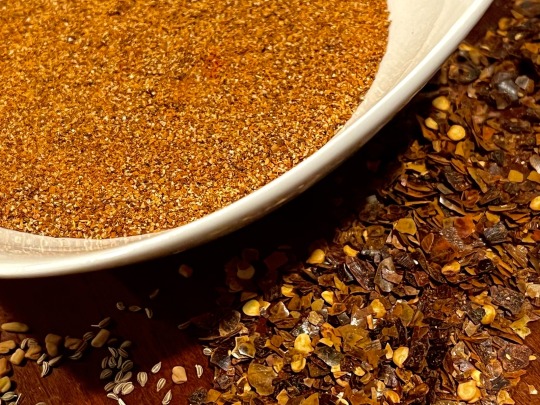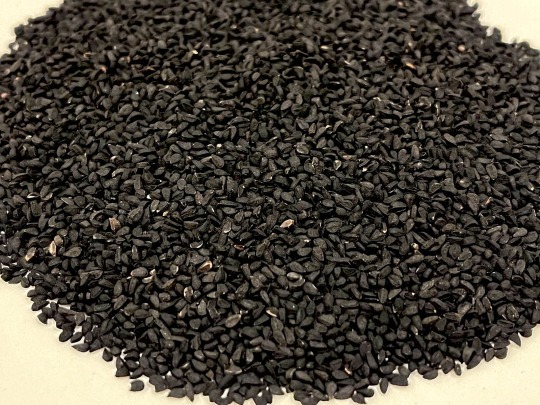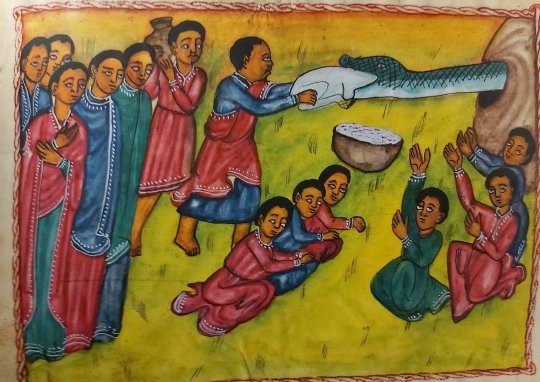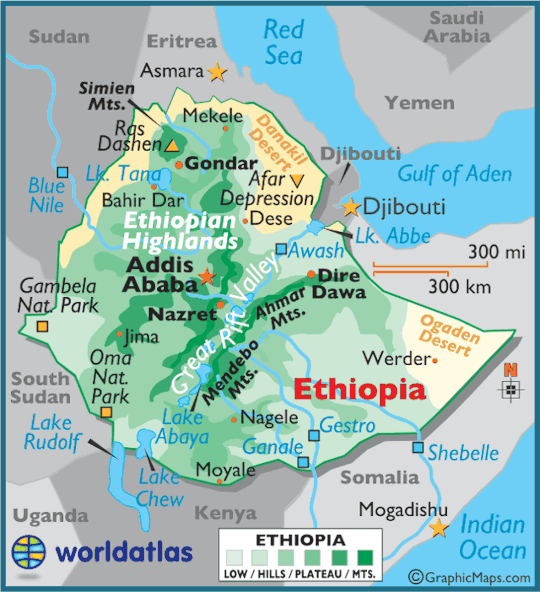#English-to-Amharic translation
Explore tagged Tumblr posts
Text
What Is a Faster way to Find An Amharic Translation Services Agency?
The Amharic language is one of the two key languages of Ethiopia, also called Kuchumba or Amarinya, mainly spoken in the country’s central highlands and some parts of the country.
The Amharic dialectal is an Afro-Asiatic language of the Southwest Semitic set. It is written in a rather modified form of the alphabet used for the script, the Geʿez language, which is the liturgical dialectal of the Ethiopian church.
The Amharic language contains 33 key characters powerfully influenced by the Cushitic languages such as Agaw and Oromo.
After the Oromo language, Amharic is another most used language in the towns and cities of Ethiopia and is spoken by over 18.7 million people, natively mentioned as the Amharas.

How can you choose the best translation partner for your business?
Here is a list of useful tips to help you make an accurate choice:
Practice makes perfect, so focus on specialists.
Operating on the global market requires accurate and correct English-to-Amharic translation services. This not only permits you to reach clientele from around the world, it also lets you communicate efficiently with clients and colleagues irrespective of their nationality.
Consider whether experts do the work when subcontracting translations to an outside partner. Being a professional can mean having strong knowledge of a specific language, but it can also mean knowing specialized and niche terminology within a definite industry. For instance, a translator has precise expertise in translating medical terminology.
By selecting an Amharic translation service provider that employs qualified and experienced translators, you can be sure that your message will preserve the meaning you had in mind when expressing it in your native language.
Choose a multilingual team.
The new languages you need to target, the more you’ll need a reliable and robust partner. A certified Amharic translation service provider generally has spent years constructing networks of highly vetted and reliable translators worldwide.
We also add numerous layers of quality guarantee to ensure the Amharic translation service is error-free and linguistically familiar to your native audience.
As a result, they provide translations efficiently and quickly, regardless of the project size. Additionally, constant collaboration with a skilled team guarantees that the Amharic translation service will be precise and consistent.
Pay attention to technologies and translation system innovations.
A modern Amharic translation service provider should also offer tools that accelerate and automate business processes.
That contains CAT tools, translation management systems, and machine translations based on artificial intelligence algorithms. These are particularly helpful in IT or e-commerce, where solutions are often needed within a short turnaround time.
The top agencies allow you to assimilate their solutions with your existing systems. For instance, translation technology can be built into your firm’s CRM and CMS systems. It should also be likely to allow for the translation of product descriptions, automation of a multilingual helpdesk, and much more.
In a speedily changing business environment, such solutions meaningfully support global operations and facilitate international communication of the company while using only local resources.
Don’t forget about data security.
Data is one of a business’s greatest resources. Shielding that data benefits your customers, your clients, and your business.
Safely storing data in the cloud of translation memory systems should be one of your main criteria when selecting an Amharic translation service provider. It will prevent confidential and sensitive information about the customers and company from being lost or falling into the wrong hands.
Look for flexibility and convenience.
Visualize a situation when you have vital documents to translate, so you employ a document translator. But then your business’s website needs to work in several languages, and the translator you employed doesn’t work with websites, so you hire an additional translator.
Then quickly, you need videos made in numerous languages too, so quickly you need a multimedia specialist.
Hiring individual contractors for each task makes project management far tougher on yourself, needlessly increasing costs.
By working with an Amharic translation service provider that provides flexible and comprehensive services, you not only have contact to a wider array of talent, but you can also move your budget to where it’s needed on a month-to-month basis. This ensures cost optimization, project quality control, and easy data flow.
A certified Amharic translation service provider can adapt to your needs. Translations and translators can be available in diverse time zones—often 24 hours a day. This level of service can be delivered only by a reliable and experienced partner.
Wrapping Up
Acadestudio always uses professional, native Amharic translators with years of experience in this industry. All our Amharic translators use CAT tools and are experienced with modern industry standards, which always helps deliver fluent, accurate, and speedy Amharic translation services.
0 notes
Text
Online Amharic Language Translation to English – Access Instant Amharic Translator
Helpful Amharic-English Translator Connecting Communities Having an accessible and accurate Amharic language translation to English service is critical for enabling clear communication and meaningful connections within the Ethiopian and Eritrean community living in the US. With over 200,000 Ethiopian immigrants across the country, there is a clear need for translator services that can break down…

View On WordPress
#Amharic document translation#Amharic interpreter#Amharic translation#English to Amharic#Eritrean community#Ethiopian community#language barrier#LanguageXS#Translation Services
0 notes
Text

btw americans are interbred w fallen angels

0 notes
Text
Accurate Amharic translation services
Accurate Amharic translation services for legal documents, books, websites, apps, and businesses For more Amharic translation services, please contact. For more information visit:- https://voicemonktranslations.com/
1 note
·
View note
Text
Since my big Languages and Linguistics MEGA folder post is approaching 200k notes (wow) I am celebrating with some highlights from my collection:
Africa: over 90 languages so far. The Swahili and Amharic resources are pretty decent so far and I'm constantly on the lookout for more languages and more resources.
The Americas: over 100 languages of North America and over 80 languages of Central and South America and the Caribbean. Check out the different varieties for Quechua and my Navajo followers are invited to check out the selection of Navajo books, some of which are apparently rare to come by in print.
Ancient and Medieval Languages: "only" 18 languages so far but I'm pretty pleased with the selection of Latin and Old/Middle English books.
Asia: over 130 languages and I want to highlight the diversity of 16 Arabic dialects covered.
Australia: over 40 languages so far.
Constructed Languages: over a dozen languages, including Hamlet in the original Klingon.
Creoles: two dozen languages and some materials on creole linguistics.
Europe: over 60 languages. I want to highlight the generous donations I have received, including but not limited to Aragonese, Catalan, Occitan and 6 Sámi languages. I also want to highlight the Spanish literature section and a growing collection of World Englishes.
Eurasia: over 25 languages that were classified as Eurasian to avoid discussions whether they belong in Europe or Asia. If you can't find a language in either folder it might be there.
History, Culture, Science etc: Everything not language related but interesting, including a collection of "very short introductions", a growing collection of queer and gender studies books, a lot on horror and monsters, a varied history section (with a hidden compartment of the Aubreyad books ssshhhh), and small collections from everything like ethnobotany to travel guides.
Jewish Languages: 8 languages, a pretty extensive selection of Yiddish textbooks, grammars, dictionaries and literature, as well as several books on Jewish religion, culture and history.
Linguistics: 15 folders and a little bit of everything, including pop linguistics for people who want to get started. You can also find a lot of the books I used during my linguistics degree in several folders, especially the sociolinguistics one.
Literature: I have a collection of classic and modern classic literature, poetry and short stories, with a focus on the over 140 poetry collections from around the world so far.
Polynesia, Micronesia, Melanesia: over 40 languages and I want to highlight the collection for Māori, Cook Islands Māori and Moriori.
Programming Languages: Not often included in these lists but I got some for you (roughly 5)
Sign Languages: over 30 languages and books on sign language histories and Deaf cultures. I want to highlight especially the book on Martha's Vineyard Sign Language and the biography of Laura Redden Searing.
Translation Studies: Everything a translation student needs with a growing audiovisual translation collection
And the best news: the folders are still being updated regularly!
2K notes
·
View notes
Text
Cool things i learned abt the Dora Milaje from the dora milaje training manual
this is canon to the 616 and comics, not the MCU, but it was cool to learn about and definitely impacts my canon compliant AU fic. So it might be useful to others. Its not the full book, not even a chapters worth of info, but if you were considering getting it, do so. It made me look at wakanda forever differently, too.
Joining
they accept women from all 5 tribes (17 in the comics) between the ages of 15-20 to become Dora
They have to bring a gift and be accepted by Bast to begin training
If accepted they are called Kanwata and the process takes 4 years to complete.
Upon initiation they go through an ori ceremony where their heads are shaved and they received their first ritual tattoo. They receive another tattoo each year, an ink with vibranium, until the second and final ori ceremony where they receive the final tattoo after their acceptance from Bast.
Training
They have to learn 7 of 10 languages: Wakandan, Xhosa, Hausa, Arabic, Yoruba, English, Igbo, Mandarin, Swahili, and Korean. They have 9 additional elective languages they can learn, especially to connect to the diaspora and blend in: cantonese, Hebrew, Japanese, French, Farsi, Spanish, Amharic, and Portuguese. They get to conversation and translation in the following years.
In the first year they must learn hand to hand combat in the forms of Ngolo, Laamb, Silat, Muay Thai, Musangwe, and Krav Maga. Once the required mastery has been met they add weapons in the second year. The Dora are considered "living weapons".
In the comic verse, they have a mystical and supernatural combat section. The kanwata training is in 3 pillars: physical, mental, and spiritual/herbal. They study vibranium application and properties as well as herbal practices like identifying plants for food and medicinal purposes.
Essentially, Dora are super smart and well trained so it takes a unique situation for them to be unprepared lol. There is even more that goes into what was listed above.
Structure
The DM have 3 major units: Guard Units, Airborne Units, and Support Staff Units. This includes Domestic, international, and Off world teams in the comics.
Dora can be broken into units, squads, or teams (helpful when trying to name group that they might be on a mission in)
They are all trained in combat and munitions (weapons) but some units are researchers, mechanics, pilots, healers, or apart of a secret division (like the cia) but no one knows who is in that secret division
Kanwata are the trainees, the 3rd and 4th years apprentice with Iya Dora and/or train younger Kanwata.
Ile Dora Milaje is what the group of active, graduated, and fully initiated Dora are called.
Iya Dora is the council that confers with wakandan leadership (Taifa Ngao, the council of elders), determines the graduation passage of kanwata, and governs the active duty, dismissal or removal from Dora ranks. There are Dora that have been re-instated after dismissal.
There are some cool excerpts if you clicked the link below. I am tired of typing lol.
#the dora milaje#dora milaje#black panther#black panther wakanda forever#protectors of wakanda#general okoye#Aneka#captain ayo
753 notes
·
View notes
Text
Since nobody in I.M.P. seems to speak anything other than English, maybe Stolas could act as a translator?
I imagine if he’s studying the stars, he’s looking up ancient maps from the human world and learning their languages (also he was left to entertain himself his entire childhood. Tell me the kid was not bored enough to learn other languages for the fun of it).
Could you just imagine a customer speaking Greek or Spanish or Amharic or Japanese or something and Stolas just starts speaking fluently with them out of nowhere? And Blitzø is very confused (but also very turned on)?
35 notes
·
View notes
Text

عَنْ عَائِشَةَ، قَالَتْ كَانَ النَّبِيُّ صلى الله عليه وسلم يَذْكُرُ اللَّهَ عَلَى كُلِّ أَحْيَانِهِ . صحيح مسلم حديث ٣٧٣
'A'isha said: The Apostle of Allah (ﷺ) used to remember Allah at all moments. Sahih Muslim 373 In-book reference : Book 3, Hadith 147
ألفاظ الحديث:
• (كَانَ النَّبِيُّ صلّى الله عليه وسلّم يَذْكُرُ الله): سبق أنه إذا جاء المضارع بعد لفظة (كان) فإنه هذه صيغة تدل على المداومة وتكرار ذلك الفعل ما لم توجد قرينة تبيِّن خلاف ذلك.
• (يَذْكُرُ الله): الذكر هنا عام للقرآن وغيره من التسبيح والتحميد والتهليل والتكبير والاستغفار وكل ما يسمى ذكر لله تع��لى.
• (عَلَى كُلِّ أَحْيَانِهِ): أي في كل أوقاته، ف- (على) هنا للظرفية بمعنى (في): والأحيان جمع (حين) وهو الزمان قلَّ. أو كثر... كامل الشرح من موقع الألوكة
يتعلق بهذا الحديث فوائد:
الفائدة الأولى: ذكر الله تعالى من أعظم القربات، وأجلِّ الطاعات، العمل به يسير، وأجره كثير، وهو عند الله تعالى محبوب وعظيم، وهو الحصن الحصين الذي يُحرز به العبد نفسه من الشيطان الرجيم؛ فعن الحارث الأشعري رضي الله عنه: أن نبي الله صلى الله عليه وسلم قال: ((إن الله عز وجل أمر يحيى بن زكريا عليهما السلام بخمس كلمات، أن تعمل بهن، وأن يأمر بني إسرائيل أن يعملوا بهن))...وفيه: قال: ((وآمركم بذكر الله عز وجل كثيرًا، وإن مثل ذلك كمثل رجل طلبه العدو سراعًا في أثره، فأتى حصنًا حصينًا فتحصن فيه، وإن العبد أحصن ما يكون من الشيطان إذا كان في ذكر الله عز وجل))؛ رواه أحمد والترمذي[2].
الفائدة الثانية: كان النبي صلى الله عليه وسلم يذكر الله على كل أحيانه، ولنا فيه أسوة حسنة؛ فإن الله تعالى يحب من عباده لا أن يذكروه فحسب، بل أن يكثروا من ذكره، وبذلك أمرهم، فقال تعالى: ﴿ يَا أَيُّهَا الَّذِينَ آمَنُوا اذْكُرُوا اللَّهَ ذِكْرًا كَثِيرًا * وَسَبِّحُوهُ بُكْرَةً وَأَصِيلًا ﴾ [الأحزاب: 41، 42]، وقال في وصف عباده المؤمنين: ﴿ الَّذِينَ يَذْكُرُونَ اللَّهَ قِيَامًا وَقُعُودًا وَعَلَى جُنُوبِهِمْ وَيَتَفَكَّرُونَ فِي خَلْقِ السَّمَاوَاتِ وَالْأَرْضِ رَبَّنَا مَا خَلَقْتَ هَذَا بَاطِلًا سُبْحَانَكَ فَقِنَا عَذَابَ النَّارِ ﴾ [آل عمران: 191]، وقال تعالى في فضل هؤلاء وثوابهم: ﴿ إِنَّ الْمُسْلِمِينَ وَالْمُسْلِمَاتِ وَالْمُؤْمِنِينَ وَالْمُؤْمِنَاتِ ﴾ إلى أن قال: ﴿ وَالذَّاكِرِينَ اللَّهَ كَثِيرًا وَالذَّاكِرَاتِ أَعَدَّ اللَّهُ لَهُمْ مَغْفِرَةً وَأَجْرًا عَظِيمًا ﴾ [الأحزاب: 35]، وقد كان النبي صلى الله عليه وسلم يمتثل ذلك؛ فقد كان - كما أخبرت أم المؤمنين عائشة رضي الله عنها -: (يذكر الله على كل أحيانه).
الفائدة الثالثة: ذكر الله تعالى له فضائل كثيرة يصعب حصرها، فمنها: سعادة القلب وطمأنينته؛ يقول سبحانه وتعالى: ﴿ الَّذِينَ آمَنُوا وَتَطْمَئِنُّ قُلُوبُهُمْ بِذِكْرِ اللَّهِ أَلَا بِذِكْرِ اللَّهِ تَطْمَئِنُّ الْقُلُوبُ ﴾ [الرعد: 28]، قال شيخ الإسلام ابن تيمية رحمه الله: الذكر للقلب مثل الماء للسمك؛ فكيف يكون حال السمك إذا فارق الماء؟ اهـ[3]، ومن فضل ذكر الله: أن الله العظيم جل في علاه يذكُر مَن ذكره؛ كما قال تعالى: ﴿ فَاذْكُرُونِي أَذْكُرْكُمْ ﴾ [البقرة: 152]، ولو لم يكن في الذكر إلا هذه وحدها لكفى به فضلًا وشرفًا، ومن فضائله: كثرة الثواب؛ حتى إن ثوابه ليربو على إنفاق الأموال؛ كما دلت على ذلك الأحاديث الصحيحة[4]، قال أبو برزة الأسلمي رضي الله عنه: لو أن رجلًا في حجره دنانير يعطيها، وآخر يذكر الله عز وجل، لكان الذاكر أفضل[5]، وقال أبو الدرداء رضي الله عنه: لأن أُكبِّرَ مائةَ مرة أحبُّ إليَّ مِن أن أتصدق بمائة دينار[6]. موقع الألوكة
Hadith Translation/ Explanation : English French Spanish Turkish Urdu Indonesian Bosnian Russian Bengali Chinese Persian Tagalog Indian Vietnamese Sinhalese Uyghur Kurdish Hausa Portuguese Malayalam Telugu Swahili Tamil Burmese Thai German Japanese Pashto Assamese Albanian Swedish Amharic: https://hadeethenc.com/en/browse/hadith/8402
#حديث#أحاديث نبوية#حديث شريف#الرسول صلى الله عليه وسلم#محمد صلى الله عليه وسلم#رسول الله صلى الله عليه وسلم#صلى الله عليه وسلم#اللهم صل وسلم على نبينا محمد#النبي محمد صلى الله عليه و آله وسلم#ذكر#ذكر الله#تلاوة#تلاوة القرآن#تسبيح#ادعيه اذكار تسبيح دعاء استغفار ايه صلاة صيام#الذكر#لاتغفل عن ذكر الله#دعاء#السنة النبوية#hadith#sunnah#ahadeth#islam#muslim#hadeth#prophet muhammad#prophet mohammed#sunna#thikr#athkar
90 notes
·
View notes
Note
I love the translation thing also, and the Door Trek system oh my goodness it's wonderful

ok screaming about ever after school: i just think the construction of the series is SO GOOD like the build of all the characters is perfect, each of their arcs is amazing, and the plot itself? like the climax? it fits for both the story AND the fairy tale element it's SO GOOD the fourth book is like. in my top 3 of finales for middle grade fiction
yES and their TALES are so unexpected (mm maybe not the right word but no one in the story expects some of these and I remember being surprised the first time) and so well set up and so PERFECT I am so looking forward to Chase being angy over his Tale XD
I'm at the poisoning part of book 2 now and omfg how has Ben not Realized HES ALEEADY IN A TALE YIU GREAT MORON STOP MAKING EYES AT MIA
#i want one#altho. the north american and australian chapters should use translators too#i used to work in an area with a high density of spanish- and amharic-speaking people#what if they were characters? or if someone moved from mexico or argentina or japan to north america or australia#and didn't speak enough english to easily communicate?#anyways its still way cool and i want a silver gumdrop translator
12 notes
·
View notes
Text
🤍Linguistics🤍
💙Xingshen💙:
Fluent in Mandarin, Igbo, Hausa, French, Latin, and English
After so many centuries away from her family, her accent is mostly Chinese, though she's still used to pronouncing her vowels longer
Thanks to being brought up as a noble, star was taught to speak in a very proper and exact manner, though time away from high society in the modern age means some of the stricter grammar has faded
If star cusses at all, it's in a language she knows/hopes present party won't understand
It feels more polite to disguise the foul language somehow
💜Chandrelle💜:
Fluent in Common, Elvish, Orcish, Undercommon, and Aquan
Sadly barely ever has occasion to speak Aquan, though she loves it dearly
Though never going to the Underdark herself, Chandrelle knew before making her life on the land that Drow elves were particularly fond of surface elf slaves- and Sea elves were considered to be particularly 'exotic'. She figured it would be in her best interest to learn Undercommon so that, in the event of her capture and sell into slavery, she could at least understand the language
Orcish was another practical measure. Chandrelle had heard of orcs being called warlike and impatient, yet still she saw no reason not to learn the language in the event that she could use reason with one. As an additional upside, some goblins (who she heard to be quite bothersome and equally wont to action over words) spoke Orcish, thus hopefully saving her from having to learn both languages
If at all possible Chandrelle prefers to speak in and sing in Elvish, preferring it more than Common (which she sees as rather plain and boring in comparison to her own lovely language)
🩷Sylvia🩷:
Fluent in Amharic, Scottish Gaelic, Lepontic, English, and Gaulish
Her multilingual skills allow for her to assist many people calling the Home Safety Hotline, and she gets paid extra to translate the information packets callers are sent
Lepontic and Gaulish were learned for funsies, she adores old Celtic languages
No matter the language she speaks, Sylvia has a very heavy Ethiopian accent
She also has a habit of constantly speaking like a 2010s teen on MySpace, but her points always get across eventually
It can be a jumpscare for people not used to her, though, like the callers who are expecting a calm, cool, professional person on the other end
And then they get hit with the "Haiiiii! This is Sylvia, I'll be yoar assistance 2day!!11 SO!!! What seems to be the probz?"
I know in Home Safety Hotline the employee doesn't actually speak
But the bit is too funny for me to pass up
#chandrelle#xingshen#hong xingshen#sylvia#language#language stuff#oc facts#xingshen facts#sylvia facts#chandrelle facts
18 notes
·
View notes
Text

15 𝙄𝙣𝙩𝙚𝙧𝙚𝙨𝙩𝙞𝙣𝙜 𝙁𝙖𝙘𝙩𝙨 𝘼𝙗𝙤𝙪𝙩 𝙀𝙩𝙝𝙞𝙤𝙥𝙞𝙖🇪🇹
1. The Ethiopian 🇪🇹 calendar is different from the Gregorian calendar. There are thirteen months in the Ethiopian calendar, which means they are currently in 2014.
2. Ethiopians 🇪🇹 also measure the hours of a day to a different schedule based on the logic that the clock starts when the day does. Ethiopia, however, observes 13 calendar months per year. This makes the Ethiopian calendar 7 years behind the rest of the world.
3. Ethiopia 🇪🇹 is the only African country never to have been brought under colonial rule. The Itàlians tried but failed woefully and were defeated by the solid Ethiopian forces.
4. Ethiopia 🇪🇹 has the world's 0ldest Bible and the most unique.
5. Ethiopia 🇪🇹 is home to one of the world's best coffee. In fact, coffee production is huge in Ethiopia.
6. According to some archaeological findings, Ethiopia 🇪🇹 is the cradle of humànkind. Meaning lifè actually started in Ethiopia.
7. In 1960, an Ethiopian named Abebe Bikila became the first Black African to win gold in the Olympics. He won it by running barefoot.
8. Addis Ababa's name translates to ‘New Flower’ in Amharic. The city is one of the oldest cities in the world.
9. Ethiopia 🇪🇹 is home to some of the world's tastiest, healthiest and most diverse cuisines on the continent of Africa.
10. The biggest festival in Ethiopia, Timket, is a three-day annual festival that honours the baptism of Jesus Christ in the river Jordan. It's one of the world's largest festivals that takes place annually. The festival attracts millions of people from all over the world.
11. Ethiopia 🇪🇹 has the most UNESCO World Heritage Sites on the continent. Ethiopia takes first place as the African country with the most UNESCO World Heritage sites. There are 9 total ranging from religious sites to natural areas. Among them are the Simien National Park, Konso Cultural Landscape and the rock-hewn churches.
12. Over 80 languages are spoken in Ethiopia. There are over 80 languages spoken with English being the language of educational systems in addition to local languages which include Oromo, Amharic, Somali and Tigrinya.
13. Over half of Africa’s mountains are in Ethiopia 🇪🇹 Along with Ethiopia’s incredible cultural and historical significance, the natural beauty is in a league of its own. In addition to a gorgeous landscape of low desserts and volcanic plateaus, Ethiopia is incredibly mountainous. In fact, around 70% of Africa’s mountains are in Ethiopia.
14. Ethiopia 🇪🇹 is Africa’s oldest country. Originally founded in 980 BC, Ethiopia is the oldest independent nation on the continent. Additionally, Ethiopia has remnants of some of the most ancient human beings on earth dating back millions of years making it one of the most important archaeological areas in the world. Not only that, but it is the second most populated country with more than 106 million people.
15. Ethiopia 🇪🇹 is the only country in the world with its own unique Alphabet.
49 notes
·
View notes
Text

[ID: A close-up on the bottom right of a bowl filled with a red, brown, and yellow spice blend. The rest of the frame is taken up by scattered brown chili flakes, ajwain, and fenugreek seeds. End ID.]
Berbere / በርበረ (Ethiopian spice blend)
Berbere is a spice blend commonly used to flavor meat and vegetable dishes in the horn of Africa; mostly made up of Ethiopian brown chili peppers, it also commonly includes garlic and shallot, false cardamom, carom and nigella seeds, high-roasted fenugreek, cinnamon, and other spices and herbs. This recipe for an Ethiopian-style berbere produces a blend that imparts a smooth, even heat and a slight camphorous aroma to your final dish.
Premade berbere blends, even those from speciality spice stores, cut corners and cut costs—even if the spices are fresh and have always been stored sealed, the blend is unlikely to contain Ethiopian brown chilis, korerima, or besobela. This recipe provides a good baseline for a typical Ethiopian berbere if you're able to get your hands on these spices, rather than relying on undisclosed substitutions—but it does provide substitutions for anything you're unlikely to find in a local halaal grocery store in the U.S. or Europe. To avoid confusion with overlapping English translations (and because many recipes contain errors caused by them), Amharic terms, botanical (Latin) names, and false cognates to beware of are provided whenever necessary.
Recipe under the cut!
Patreon | Tip jar
Ingredients:
1/4 cup dried ground Ethiopian brown chili (berbere), or substitute New Mexico chilis
1 Tbsp sweet paprika (optional)
2 tsp garlic powder (nech shinkurt / ነጭ ሽንኩር��)
2 tsp dehydrated shallot or red onion (key shinkurt / ቀይ ሽንኩርት)
2 tsp false cardamom (korerima / ኮረሪማ; Aframomum melegueta)
1 tsp coriander seeds (dimbilal / ድንብላል)
1 tsp black mustard seeds (senafitch / ሰናፍጭ; Brassica nigra) (optional)
1/2 tsp fenugreek (abish or hulbet / አብሽ; Trigonella foenum-graecum), dark-roasted
1/2 tsp nutmeg (gewz; Myristica fragrans)
1/4 tsp ground ginger (zinjibel / ዝንጅብል; Zingiber officinale)
1/4 tsp carom seeds (nech azmud / ነጭ አዝሙድ; Trachyspermum ammi)
1/4 tsp nigella seeds (tikur azmud / ጥቁር አዝሙድ; Nigella sativa)
1/8 tsp true (Ceylon) cinnamon (k'elefa / ቀረፋ; Cinnamomum verum), or substitute cassia cinnamon
4 pieces Ethiopian long pepper (timiz; Piper capense); or Indian long pepper (Piper longum), also sometimes used under the name "timiz"
5 whole cloves (krenfud / ቅርንፉድ)
1 tsp Ethiopian holy basil (besobela / በሶቢላ)
1 tsp rue seeds (tena Adam / ጤናዳም; Ruta chalepenesis)
1 tsp Ethiopian rape seeds / Ethiopian mustard seeds (Brassica carinata), or substitute niger seeds (Guizotia abyssinica)
1 tsp koseret (ኮሰረት; Lippia abyssinica) (optional)
2 tsp salt
Berbere preparations vary from household to household, and spices may be added, removed, or rebalanced according to your preference. Less common inclusions are marked as optional; the spices and herbs that are the most vital are bolded.
See end notes for information on spices and substitions.
Instructions:
1. Heat a dry skillet over medium. Roast fenugreek, agitating occasionally, until it has considerably darkened to a medium brown. Set aside. Toast cinnamon, cloves, and korerima for a few minutes until fragrant and set aside.
2. Toast smaller whole spices (carom and nigella seeds) for a few minutes until fragrant and set aside.
3. Remove the pan from heat. Toast ground spices (ginger, paprika) for 30 seconds, stirring constantly, until fragrant.
4. Use a mortar and pestle or a spice grinder to grind all ingredients to a fine consistency. Pass through a fine mesh strainer and store in an airtight container in a cool, dark place.
Notes on spices and herbs
Ethiopian brown chili pepper / berbere

Known as "berbere" in Ethiopia, Ethiopian brown chilis have a rich, smoky, and tangy heat. Dried Ethiopian brown chilis or chili flakes may be purchased online, or you may substitute another type of chili (my choice would be New Mexico).
Paprika
Different varieties of paprika are all made of dried, toasted, and ground red bell peppers, but they vary in heat and in smokiness. For berbere you will need sweet paprika (not smoked paprika, hot paprika, or smoked hot paprika). The proportion of berbere to paprika can be varied a bit according to your preference to produce a milder or hotter blend, but beware of recipes calling for large amounts of paprika—berbere should be mostly chilis!
Dehydrated shallot
Shallots have a flavor similar to those of garlic and onion, but subtler and milder. Dehydrated shallot may be purchased at speciality spice stores, or online—or you can dehydrate thinly sliced shallots in a dehydrator or in an oven on low. Red onion powder is a possible substitute, as red onions are commonly used in place of shallots by people of Ethiopian descent in the United States.
Korerima / false cardamom

Korerima is also known as "grains of paradise," "black cardamom," or "false cardamom." Some recipes mistakenly call for Nepal cardamom in place of korerima, because Nepal cardamom is also known as "black cardamom" in English. The aroma of korerima once ground, though, is much more akin to that of green cardamom than to the smoky, camphorous aroma of Nepal cardamom.
Fenugreek / abish

Fenugreek seeds may be found in any halaal grocery store, where they may be called fenugreek or methi.
Carom seeds / nech azmud

Carom seeds may be found in any halaal grocery store, where they will be known as ajwain. You may also see these referred to as "white cumin" or "caraway seeds" in English, but don't confuse them with true caraway seeds (Carum carvi), which are larger.
Nigella seeds / tikur azmud

Because "tikur azmud" literally translates to "black cumin" in English, some recipes make the mistake of calling for kala jeera (Indian black cumin)��however, the seeds are from different plants entirely. "Tikur azmud" refers to the seeds of the Nigella sativa plant, which are known as nigella seeds in English cooking and kalonji in Indian cooking.
Ceylon cinnamon

Ceylon or true cinnamon is a variety of cinnamon commonly grown in Ceylon, Sri Lanka; it has a subtler, more nuanced and less bitter flavor than cassia cinnamon. Because it must be rolled by hand (unlike cassia cinnamon, which curls naturally), it tends to be more expensive than cassia. If you can't locate any Ceylon cinnamon, though, cassia is a good substitution.
Holy basil / besobela

Ethiopian holy basil is a subspecies of basil whose flowers have a distinctive fruity or tea-like aroma. Some recipes call for basil in place of besobela, but to my nose the aromas are nothing alike; I would favor camomile as a substitution, or omit the herb altogether.
Rue seeds / tena adam

"Tena Adam" (lit., "health of Adam) or "rue" is an aromatic plant the dried fruits of which are used in spice blends including berbere (the leaves are often used to flavor coffee). Ethiopian rue may be purchased online, or you may substitute for it a pinch of lemon or orange zest.
Long pepper / timiz
The berries of Piper capense, also known as African long pepper or Ethiopian long pepper. Piper capense grows across west Africa, south Africa, and the horn of Africa. Timiz is smoky, camphorous, and resinous, not as spicy or sharp as black or white pepper. Piper longum (Indian long pepper) berries, which are sharper in taste, are best known for their cultivation in Southeast Asia, but they are also grown and eaten in East Africa and may also be referred to as "timiz." In the U.S. and Europe, Ethiopian long pepper may be found online, or at a speciality African foods store, where it will be labelled "timiz"; Indian long pepper may be found at an Indian or halaal grocery store, where it will be labelled "pippali."
Salt
Traditional berbere blends typically contain salt. I tend to omit it, as it allows for more control over the salt content of a dish later on.
88 notes
·
View notes
Text

The Greek name Αἰθιοπία (from Αἰθίοψ, Aithiops, "an Ethiopian") is a compound word, later explained as derived from the Greek words αἴθω and ὤψ (aithō "I burn" + ōps "face"). According to the Liddell-Scott Jones Greek-English Lexicon, the designation properly translates as burnt-face in noun form and red-brown in adjectival form.

The historian Herodotus used the appellation to denote those parts of Africa south of the Sahara that were then known within the Ecumene (habitable world).Since the Greeks understood the term as "dark-faced", they divided the Ethiopians into two, those in Africa and those to the east from eastern Turkey to India.

This Greek name was borrowed into Amharic as ኢትዮጵያ, ʾĪtyōṗṗyā. More likely Αἰθιοπία was derived from a native word ዕጣን (ʿəṭan, incense), of which Ethiopia was an important source

In the 15th-century Ge'ez Book of Axum, the name is ascribed to a legendary individual called Ityopp'is. He was an extra-biblical son of Cush, son of Ham, said to have founded the city of Axum.

#kemetic dreams#african#afrakan#africans#afrakans#brown skin#brownskin#african culture#ityoppia#ethiopia#addis abba#dire dawa#gondar#bahir dar#nagele#moyale#somalia#shebelle#greek#helen#etymology#amharic#ham#kush#cush#book of aksum#aksum#sahara#north africa#north ifriqiya
42 notes
·
View notes
Text
Language Goals 2023
In the spirit of last year’s very reasonable and achievable goals, here are more reasonable and achievable goals for 2023!
Catalan - I’d like to get the C2 this coming year. I’d also like to read more; specifically Ausiàs March and Vicent Andrés Estellés, and possibly El Canigó and/or El comte Arnau. And if I can, I’d like to write one creative piece in Catalan that I can feel proud of!
Welsh - I’d like to listen to more of Pigion, watch more Hansh videos, and also to find more spaces to use the language in. I really want Welsh to start feeling like a language that I can do things in, because I’m at a level where I can.
Basque - I want to watch at least one or two things in Basque, and, the same as Welsh, for it to be a language that I can use for things, not just a language I’m learning.
Malayalam - I would like to get to a really basic home heritage speaker level of Malayalam by the end of the year—understanding conversations when I visit family, and being able to answer when spoken to. My goal is to watch one Elikutty video per week, and to try to integrate the language into my thoughts and routine more.
Spanish, Galician, Aragonese, Asturian - I’d like to brush up on Spanish for academic purposes, and also to learn a bit about the grammar of the other three. I’d like to start remembering to actually watch A escampar la boira, and to start listening to more music in Aragonese and Asturian. As for Galician, I’d like to go into breaking down lyrics for the many songs I already listen to in it, and maybe watch more videos in it as well. In general, I’m aiming to go into the sphere of Iberian studies, especially Iberian minoritized languages, and so I want to be more familiar with the larger panorama.
Irish, Scottish Gaelic, Cornish, Manx, Breton - Same as for the others above, I want to have somewhat of a functional understanding of more Celtic languages so that I can interact with speakers and media production without needing a translation. I also just listen to a lot of music in at least Irish, and it drives me crazy not to be able to at least superficially understand it. I think the Celtic cultural sphere is really interesting, and so I’d like to be able to learn more about it and talk to more people within it without needing to make them translate to English.
Russian - I really want to be able to understand what people are saying at my friend’s house, and I think that if I put in enough Russian listening practice and vocabulary study I’d be able to piece it together, at least partially; I can already figure it out sometimes with just a few words and context. So I’d like to actually put in some time on that, in the hopes that maybe afterwards, if I spend a few days at her house, I’ll come out understanding Russian sdfhksdhf
Amharic - I’d like to be able to speak some basic Amharic, so my goal is to learn a few basic sentence patterns and some vocabulary, and maybe be able to say one or two things by the end of the year. Nothing big, but just a bit.
I have no idea if I’ll even get close with any of these languages to the goals that I’ve set out here, but I think that if I do, it’ll pay off! And if I don’t, then at minimum, my goal is to learn one thing for each that I can feel good about in a year’s time, and I hope that at least I can do that.
#i really do learn a lot by passive input and it keeps me engaged with the language so i want to increase that rather than my studying time#i do think i'm going to try out anki but we'll see how that goes (?)#this is ambitious i don't think i'll manage it tbh#general:goals#catalan:goals#welsh:goals#basque:goals#malayalam:goals#russian:goals#amharic:goals#spanish:goals
26 notes
·
View notes
Note
𐌵ነ𐌍ጋ𐌄ኡ𐌓ዓᏵቹ𐌁ህ𐌓ⶴ𐌕ህ𐋄ጮ𐌀
u tryin to speak runes? (¬ᴗ¬)
i luv runes. but u 4got perhaps dat i decided to never do anything smort again after i dropped out of uni. made my lif way eazier
dis is some sort of amharic thing?,,, i put in a little more effort than just amharic to english translator on google I SWEAR
i used to luv runes tho i used t hem a lot in amphibia
pls contact me again. maybe in english dis time
-mar-c
#marcy wu#amphibia#amphibia ask blog#amphibia marcy#amphibia rp#marcy#guyz i swear we had a questions tag but uhh lol
5 notes
·
View notes
